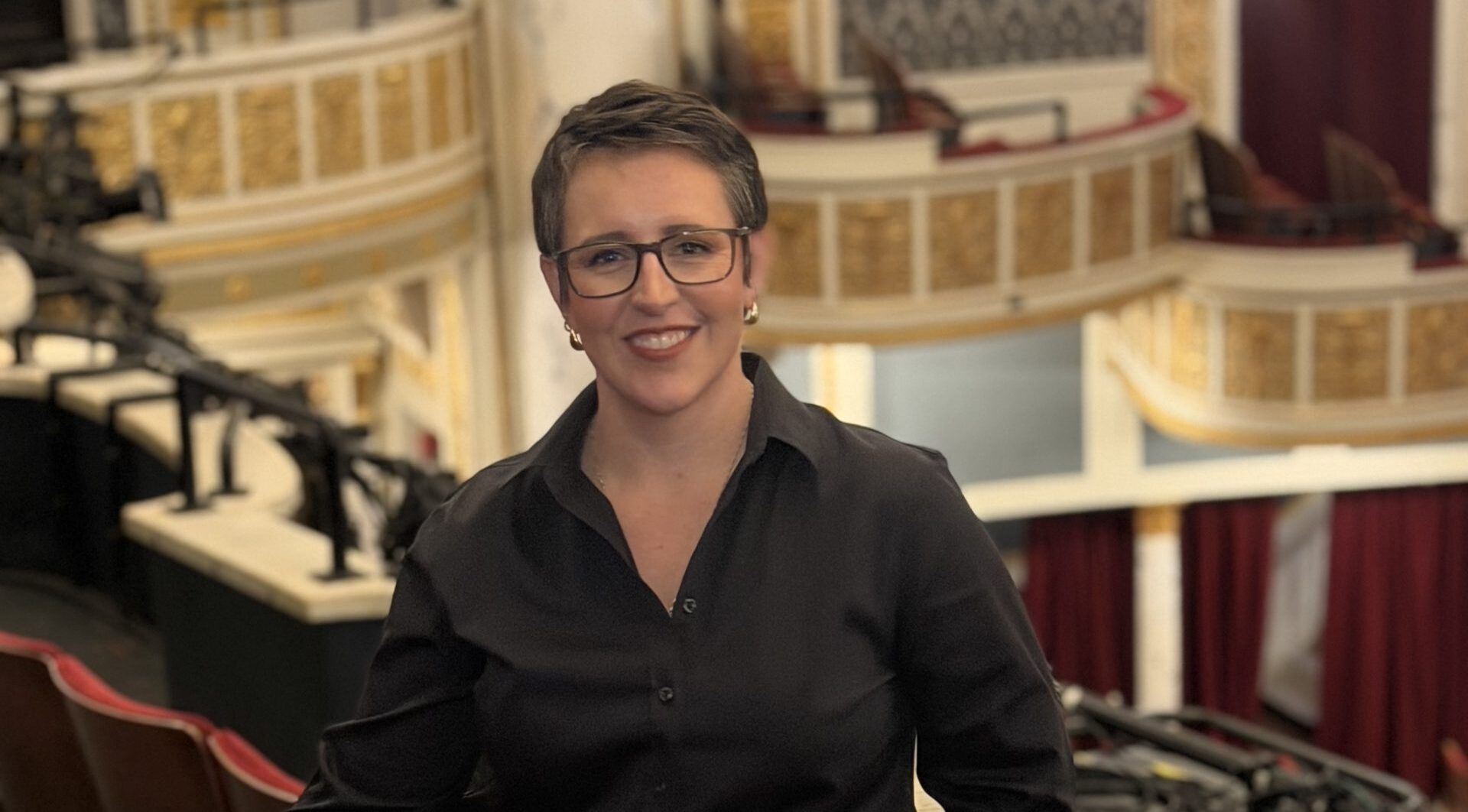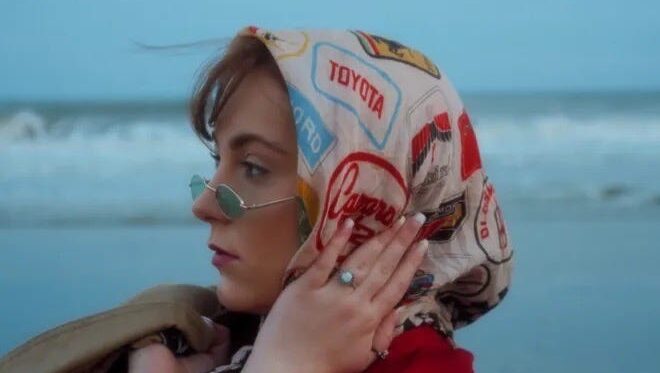On a gorgeous spring day last May, the Capital Region dating world felt a monumental shift. After more than a year spent locked up in their homes, and after almost a decade spent swiping on superficial Tinder profiles, 60 singles converged—in person—on Wolf Hollow Brewing in Schenectady for the first face-to-face gathering of Capital Heart Connection, a social club founded to help Upstate New Yorkers meet their person IRL. And these days, that’s rare.
When talking about dating in the 21st century, dating apps are where the conversation starts—and, for many, ends. Swiping on apps such as Tinder, Bumble and Grindr (a dating app for the LGBTQ+ community) has in many cases replaced the act of trying to meet people in person, for better or worse. “Dating apps take the humanity out of dating,” says Becky Daniels, a Schenectady native who co-founded Capital Heart Connection with her friend, Gabby Fisher, in February 2021. ”That’s one area that Gabby and I are really trying to focus on, because it’s so easy to just keep swiping and not give people a chance. We don’t see people as people on there—we see them as profiles.” And, when you do give someone a chance, they may not be who you thought they were, says Lizzy Sagar. “When I was on an app and someone would be perfectly my type, I’d be like, ‘Wow, I bet this is going to be a great date,” the Albany resident says. “But I went on a bunch of first dates where I was like, ‘Oh, this person is not anything like I expected them to be.’ They put up a persona online and it’s not actually who they are in person.”
The list of complaints that Capital Regionites have about dating apps goes on and on. There’s the fact that people hiding behind a screen can be rude or at times downright mean. There’s the fact that people are more inclined to leave a relationship—or walk out on a date—over one small thing, because it’s so easy to meet someone else (or several someone elses) online. There’s the fact that being successful on dating apps actually takes a lot of time and effort. And then there’s the fact that sometimes, you accidentally weed out a perfectly good partner based on an arbitrary factor like height. “Dating apps and websites have made dating far too similar to the fast food industry,” says Schenectadian Joe Billetdoux, Jr., who runs the “518 Singles and Social” Facebook group. “You can log in, list your criteria, and even though you seem to be fine-tuning your search, you’re actually removing options. None of us knows what that X factor is that will make two people into a couple.”

But regardless of their flaws, dating apps do work; Daniels and Sagar both met their current partners on apps. According to research firm Apptopia, engagement on the 10 most popular dating apps reached an all-time high of 15.3 million this past July and, per a Pew Research Center study, one-third of all singles in the US had used a dating site or app as of February 2020. That number has likely spiked since then, given that the COVID pandemic annihilated virtually all chances of meeting someone in person.
Speaking of COVID, it’s probably the biggest thing to happen to dating in the last 10 years, besides the emergence of apps. On the one hand, COVID made dating harder—a lot harder. “Dating for older singles is super tough, especially during the pandemic,” one local Facebook user lamented in a September post in the “What’s Going On Saratoga?” Facebook group. “Pre-pandemic there was the art scene and programs at a number of local places, but they are all idle now.” On the other hand, COVID also introduced virtual dating—i.e. meeting up with a date on FaceTime or Zoom—and, as no one was going out to bars or other social gatherings, made using dating apps even more socially acceptable than they already were.
The pandemic has even changed people’s mindsets about dating. In its 2020 Singles in America report, Match found that 58 percent of singles using dating apps shifted toward more intentional dating since the pandemic began and 69 percent were being more honest with potential partners. Match’s 2021 report only solidified the finding that COVID forever altered dating. “While many expected the pandemic to cause a deluge of post-traumatic stress (and rightfully so),” the November report reads, “we actually found the opposite within the single population: ‘post-traumatic growth.’ Or what we like to call ‘The Grown-Up Glow Up.’ Men and women of all ages matured more, improved their health and reset their sexual, romantic and life priorities.” The 2021 report also found that only 78 percent of singles want a partner who’s physically attractive, a 12 percent decrease since 2020. In other words, as we navigate COVID, looks matter less than ever. And apps like Hinge are especially popular because they allow you to add more information about yourself in your bio than Tinder, where bios have a 500-character limit. It’s almost as if dating apps, this generation’s answer to websites like Match, eharmony and OkCupid, which are now thought to be only for older singles, are actually becoming more like those sites. Those websites, on the other hand, all now have apps of their own.

If nothing else, Daniels says, COVID created “this huge swell in need and desire for human contact and to meet new people, even if it wasn’t on a romantic level.” That’s where Capital Heart Connection comes in. That first Wolf Hollow get-together yielded several dates and plenty of friendships, and more events held throughout the Capital Region at Troy’s River Street Market, Schenectady’s Centre Street Pub and a Tri-City ValleyCats game have as well. Daniels and Fisher have also since launched The Micropolitan Matchmakers, a podcast about dating in a small- to medium-sized city. “Dating here gets a bad rap because there are less people, so the dating pool is smaller,” Daniels says. “But there are still a ton of people in our region. Even though we might not be the size of a New York City or a Chicago, it’s actually easier to break into certain activities. If you have an interest and you’re in a bigger city, it might be a larger expense or just overwhelming to find social groups or clubs to break into to meet new people.”
Sagar, who lived in Washington, DC, prior to moving to the Capital Region for physician assistant school at Albany Medical College (AMC), says dating here is indeed very different than dating in a big city. “In DC, when you go on dating apps, you’ll never run out of people to swipe on,” she says. “When I came up here and would go on dating apps, it would refresh and be like, ‘You got through everyone in your area.’” The smaller population also had real-life implications for Sagar’s dating life. After matching with an AMC med student she’d never met before, she saw him walking around Downtown Albany. “I was like, ‘Are you Grant?’” she says. “That would never happen in DC.” The flip side of that? “Prior to my relationship, there were a few people I would see at the gym or something and I’d be like, ‘Oh, I really hope they’re on Bumble,’” she says. “And I’d go and try to find them and I would, because it’s such a small place and you can get through everyone on dating apps so fast.” Even Sagar’s current boyfriend is someone she matched with on an app first, and ended up working with at Albany Med.
Around here, that phenomenon—a long-term relationship forming from some combination of in-person/online connections—actually happens pretty frequently. I personally know someone who matched with an acquaintance of her sister’s, someone who joined a gym where her Tinder crush was a trainer, and someone who reconnected with a high school classmate on an app, some seven years after graduation. All of those connections resulted in serious relationships. “Everyone that I went on a date with, even if I had matched with them on some sort of dating app, I had seen in person,” Sagar says. “Somehow I knew who they were, so it wasn’t like I was going into a blind date.”
Other Capital Region–specific dating phenomena, Sagar tells me, include the fact that while it’s very easy to ghost someone in DC, it’s not here. “When you go out on the weekends, there aren’t many bars in Albany,” she says. “I’ve definitely run into an ex at Lionheart.” And then there are the Upstate New York dating app cliches. “There are so many hiking and outdoor opportunities locally that there’s the stereotype of the man on top of a mountain or holding a fish,” Daniels says. “There are so many men holding fish!” And for female Capital Region singles? “A lot of girls, myself included, love to dress up for a track day,” says Daniels, who still sees many dating profiles through her work as a dating and mindset coach. “This is definitely an area where you’ll see women in big hats and fascinators on their profile.”
And so, as we approach Capital Heart Connection’s one-year anniversary this winter, what’s in store for the social club’s future? Well, Daniels and Fisher just launched a membership platform, which gets users access to dating tips, group discussions and members-only events, and allows them to connect with other members they might have met at an in-person event. And where does that membership platform live? On an app, of course.







